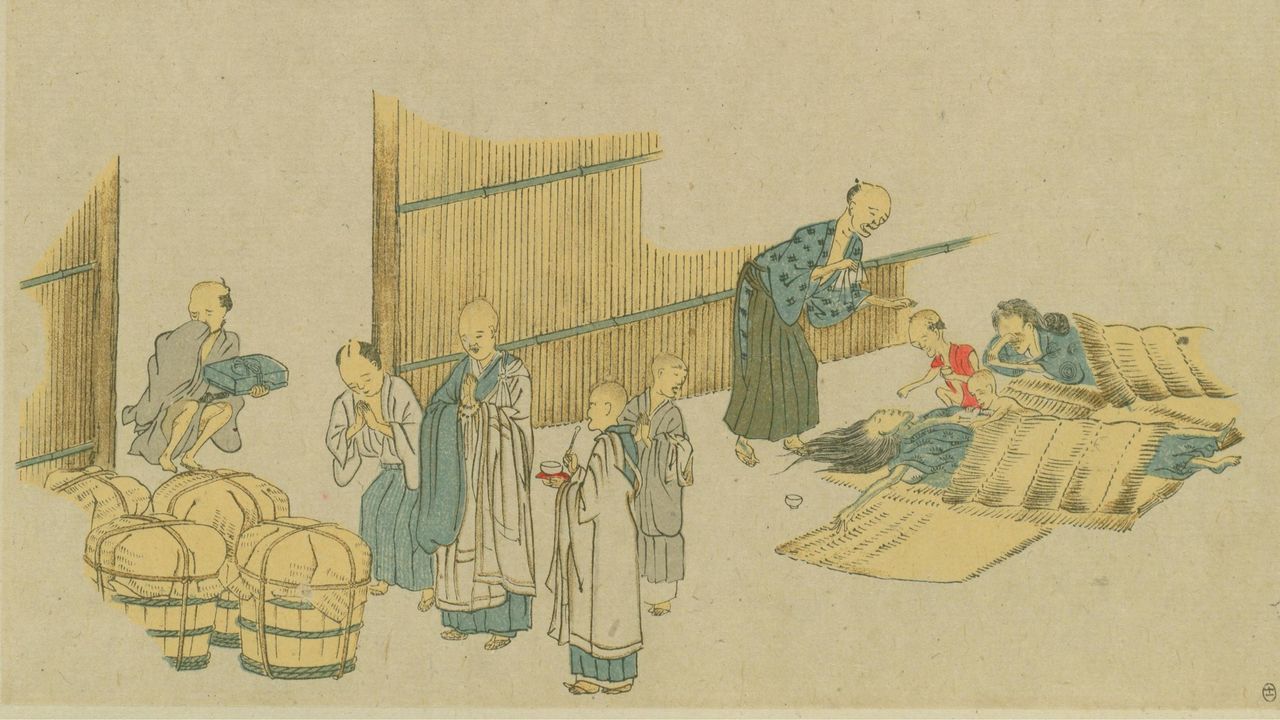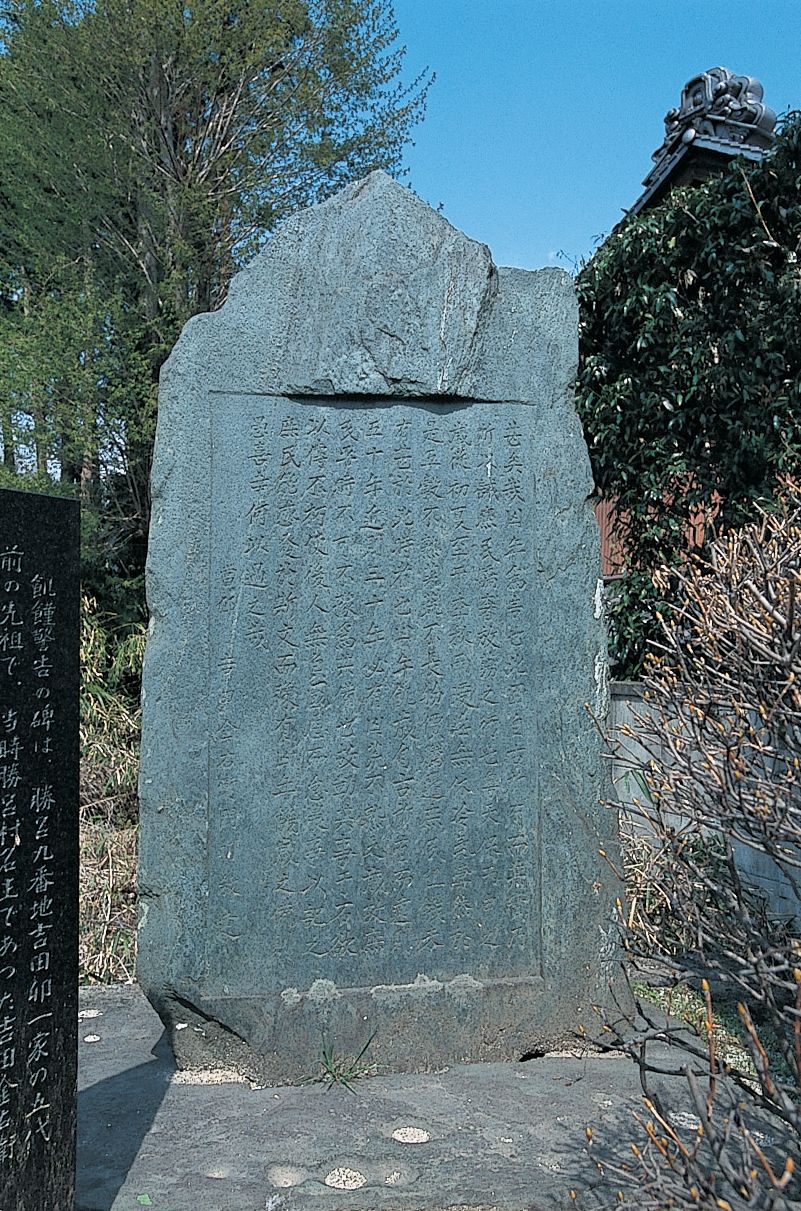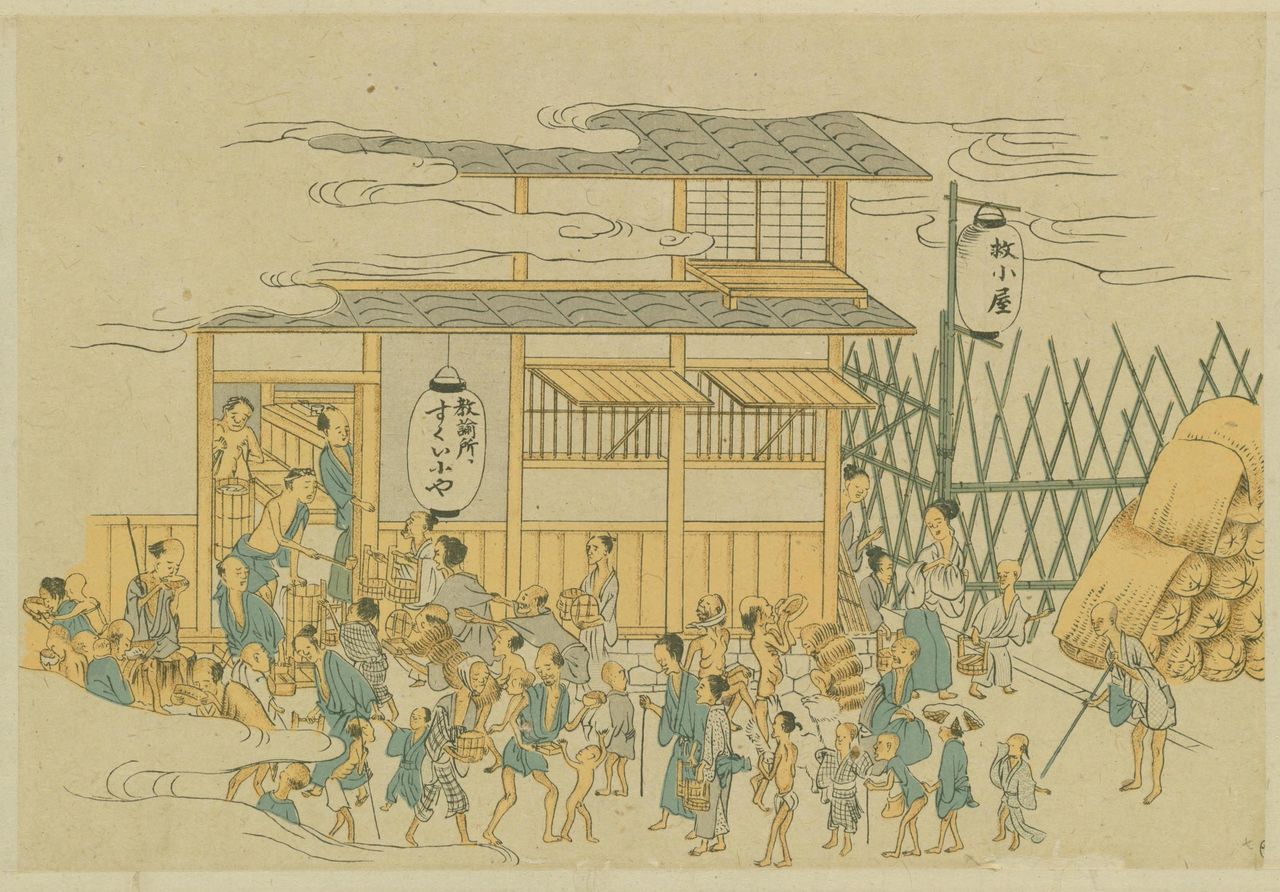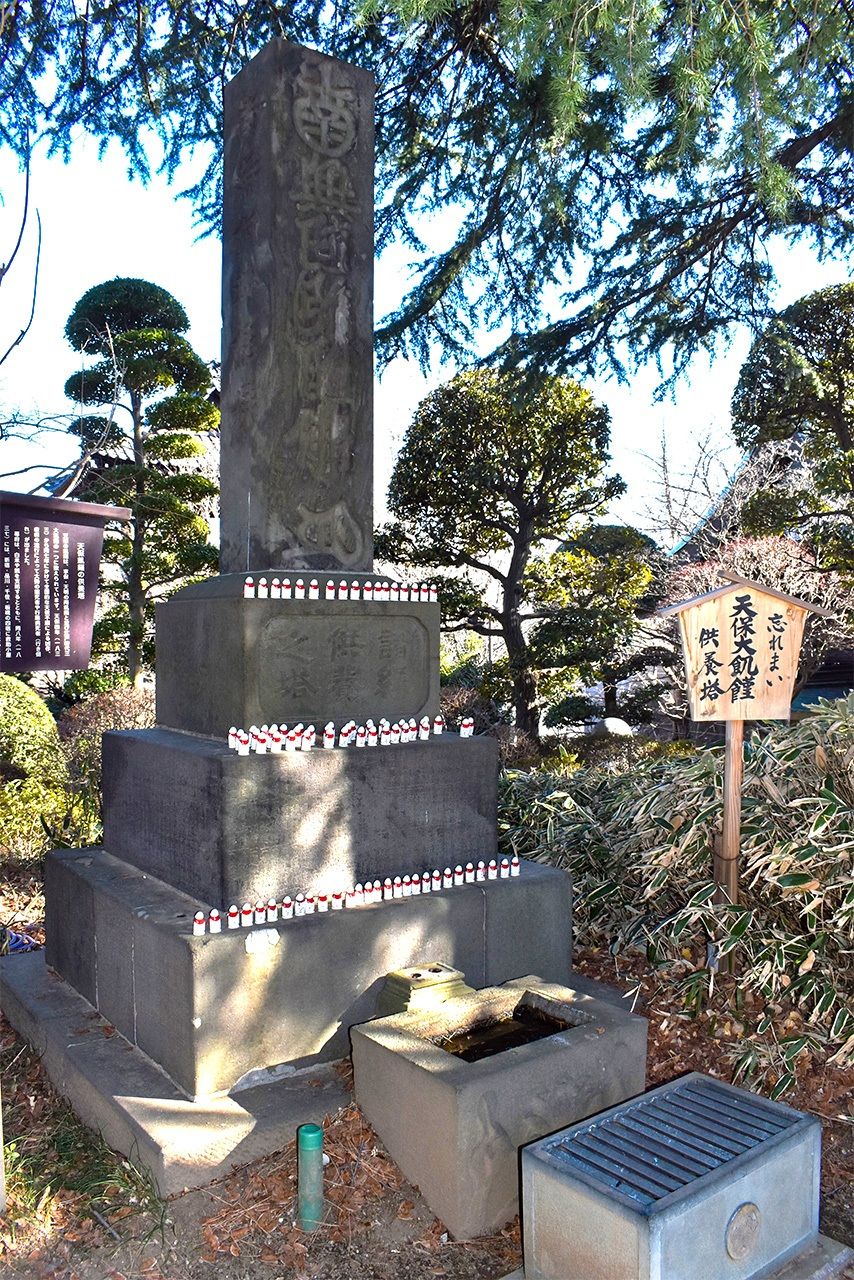
The Warnings of Famines Past
Disaster History- English
- 日本語
- 简体字
- 繁體字
- Français
- Español
- العربية
- Русский
A Stark Warning
In Ogawa, Saitama Prefecture, near Takezawa Station on the JR Hachikō Line, a stone monument stands along a highway. It stands as a stark reminder that famines occurred frequently in Japan and warns that a similar calamity could happen again.
The monument’s inscription notes that it was erected by one Yoshida Kin’emon, a village headman, in 1842 as a memorial to the Tenpō famine of 1833–37. The accompanying information says that “In 1836, it rained incessantly from the beginning of summer to autumn. Grains and vegetables grew poorly due to the unseasonably cold weather, and harvests were very meager. Prices shot up and the people had to endure famine. Famines come regularly every 30 to 50 years, and all should work hard at farming in ordinary times and to prepare for scarcity.”

The monument warning of famine. (Courtesy Ogawa municipal government)
The Tenpō Famine
In 1833, 20 years before the arrival of Commodore Matthew Perry and his flotilla of black ships threw Japan into disarray, torrential rains, floods, and an unseasonably cold summer caused major crop failures, mainly in the Tōhoku and Kantō regions. Rice prices shot up, creating hardship for farmers and townspeople. Although the shogunate and local clans set up sukuigoya aid stations and released rice stockpiles, supplies could not keep up with demand and many people died of starvation or illness.
Works by the artist and rangakusha (scholar of Dutch learning) Watanabe Kazan (1793–1841), who lived in Kyoto at the time, depict scenes outside a sukuigoya: people lined up waiting to receive food, emaciated people lying on straw mats, a Buddhist priest reciting a sutra in front of wooden buckets containing human remains.

Kōsai ryūmin kyūjutsu zu (The Desperate Seeking Aid) 1838, Watanabe Kazan. (From the digital collection of the National Diet Library)
Although summer weather was good over the next two years, worker ranks had been decimated by deaths due to illness or starvation, and agriculture and food production had not returned to previous levels. But the summer of 1836 was also unseasonably cold, further worsening the reduced food supply. Rice prices continued to spiral upward, and farmers and townspeople began attacking merchants who were jacking prices up and clan heads whose relief efforts they believed insufficient. In particular, there were widespread uprisings in Kai (today Yamanashi Prefecture) and Mikawa (in the eastern part of Aichi Prefecture).
Misery continued into 1837, with over 150 to 200 people passing away daily in Osaka. Ōshio Heihachirō (1793–1837) was a low-ranking samurai and former assistant at the Osaka magistrate’s office. A disciple of the Wang Yangming school of neo-Confucianist philosophy, he became incensed at the failure of the magistrate and local merchants to help the common people and went so far as to plan an armed rebellion.
Ōshio continued to plead with the authorities but no help was forthcoming for the people. He sold the contents of his library and other possessions, and used the proceeds to help people himself. For Ōshio, the last straw was when the magistrate’s office ordered that precious rice be presented to the new shōgun in Edo. Although the protest Ōshio instigated was quelled in one day, the shogunate was stunned at the actions of a government official, and reforms were later enacted. The Tenpō famine, which dragged on through 1839, ultimately claimed between 200,000 and 300,000 lives.
Another Threat: Far-Off Volcanic Eruptions
A major volcanic eruption, of the Cosiguina volcano in Nicaragua far across the Pacific in January 1835, may have contributed to the disaster. The website of Tōhoku University Professor Emeritus Kondō Junsei, whose field is meteorology, calls for contingency preparations in case of both volcanic eruptions and unseasonably cold summer months. Kondō describes how volcanic plumes after a major eruption rise up into the stratosphere, causing abnormal morning glows and sunsets over a wide area. In fact, an April 1835 entry in a weather diary kept by a vassal of the Date clan of Sendai in northern Japan recorded that “lately I have seen a strange morning glow in the sky every day.”
In connection with the Tenpō famine, Kondō notes that “there is a 90 percent probability that out of twenty major eruptions 10 degrees north or more of the southern latitude spewing large amounts of volcanic ash and gases into the stratosphere, an eruption would have caused an average 0.8 to 2.8 degree Celsius dip in temperatures over the three months of summer on the Pacific Ocean side of the Tōhoku region. This is a one order of magnitude fluctuation larger than the drop of 0 to 0.4 degrees ordinarily seen at the middle latitudes of the northern hemisphere.” There is no doubt that Japanese living in that era would have had no inkling that gases emitted from a volcano far across the sea could have caused cold summers and crop failures in their own country.
Human Factors Also a Cause
Ogawa resident Takase Tadashi has researched disaster-related monuments. In his booklet Saitama ken no kinsei saigai hi (Disaster Monuments of Early Modern Times in Saitama Prefecture), he records the presence of 11 such memorials in the prefecture, three of which are related to the Tenmei famine (1782–88). The remaining eight, including the warning monument mentioned at the beginning of this article, record the devastation caused by the Tenpō famine. Takase’s research has also turned up five such monuments in Tokyo.
Unlike natural disaster monuments, monuments to famine disasters are not under the purview of the Geospatial Information Authority of Japan. Accordingly, no one knows how many there are throughout the country. However, it is clear from old documents and local history compilations that famines occurred everywhere in Japan. Based on the information the documentation contains, Takase says that while famines result directly from prolonged rains or cold summers, human factors such as government policies or failure to distribute food effectively can also have an effect, as evidenced by Russia’s attack on Ukraine and ensuing disruptions to grain shipments, and food shortages in Africa due to drought.

A memorial tower to the Tenpō famine stands in the grounds of the temple Jōrenji, in Akatsuka, Itabashi, Tokyo. It is inscribed with the posthumous names of 423 people, including 41 children, who died in March–November 1837 in the Itabashi post town, as the area was known at the time. (© Abe Haruki)
(Originally published in Japanese. Banner image: A sukuigoya aid station. Kōsai ryūmin kyūjutsu zu [The Desperate Seeking Aid], 1838, Watanabe Kazan. From the digital collection of the National Diet Library.)
